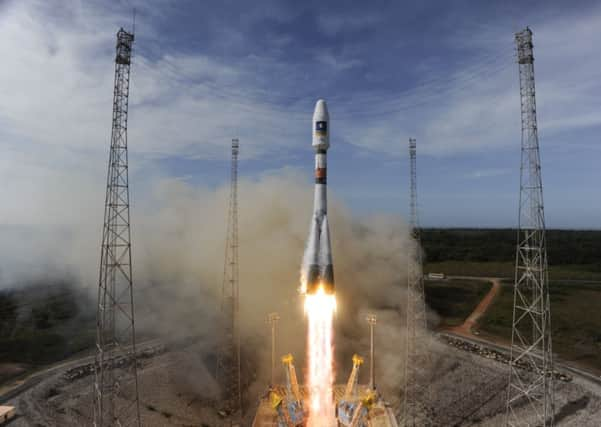Space probe as Euro satellites enter wrong orbit


The inquiry into the “anomaly” will focus on whether inaccurate deployment was to blame for sending the satellites into a “lower orbit than expected”.
The misplacement is a setback for the ESA in its efforts to develop a new Galileo satellite navigation system that would rival America’s Global Positioning System (GPS) network.
Advertisement
Hide AdAdvertisement
Hide AdThe satellites Doresa and Milena went up on a Soyuz rocket, launched from French Guiana on Friday, after a 24-hour delay because of bad weather.
“Observations taken after the separation of the satellites from the Soyuz VS09 [rocket] for the Galileo Mission show a gap between the orbit achieved and that which was planned,” the launch service provider Arianespace said in a statement. “They have been placed on a lower orbit than expected. Teams are studying the impact this could have on the satellites.” Arianespace declined to comment on whether their trajectories could be corrected, according to reports.
However, a spokesman for the ESA said the satellites were under control and an investigation was underway. He said: “Both satellites have been acquired and are safely controlled and operated from ESOC, ESA’s Operations Centre in Darmstadt, Germany. The teams of industries and agencies involved in the early operations of the satellites are investigating the potential implications on the mission.”
Jean-Yves Le Gall, president of the French space agency CNES, said the investigation needed to determine precisely how far off course the satellites were.
He said experts were calculating whether small motors inside the satellites would be strong enough to push them into the correct orbit.
Le Gall said the investigation would take “several days to understand what has happened... and then we’ll see about the possible consequences on the launch calendar” – in a reference to plans to launch more satellites in the coming months.
After years of delay, Galileo is now finally moving towards full deployment.
The ESA, which is building the system on behalf of the European Commission, expects to have a 26-satellite constellation in orbit by 2017, and a 30-satellite Galileo network fully operational by 2020. The Prague-based programme oversaw the launch of its first two satellites in 2011, two more in 2012, and two more last week.
Advertisement
Hide AdAdvertisement
Hide AdThat last launch marked the project moving from its test phase, or “in orbit validation”, to “full operation capability”.
The European Union is investing billions in its satnav project. It believes Galileo will bring significant returns to European economies in the form of new businesses that can exploit precise timing and location data delivered from orbit.
The cost of the project, which is funded and owned by the EU, is £4.4 billion. It is intended to provide Europe with an independent alternative in case of signal failure on the existing American GPS or on the Russian Glonass system. According to the ESA, the project will create 15,000 to 20,000 jobs within the EU.
Network: System has 30 satellites
GALILEO is Europe’s global satellite navigation system – a more advanced version of the United States’ Global Positioning System (GPS).
It will comprise a network of 30 satellites, which are due to be in place by 2020.
At least four will be visible anywhere on Earth, providing complete coverage from an altitude of 14,500 miles.
They will work alongside GPS and the Russian Glonass system.
However, they will also depend on an extensive ground infrastructure network, which will have to make sure that time and positioning data are extremely accurate.
A single billionth of a second clock error would mean a positioning error that could go up to 30cm.